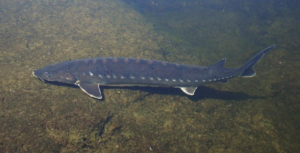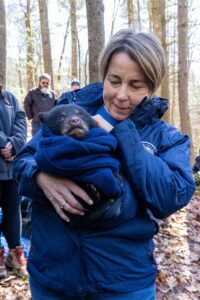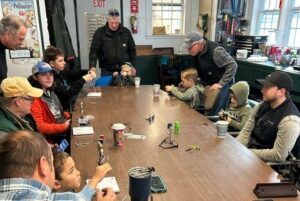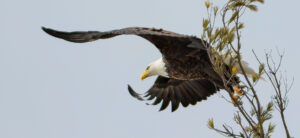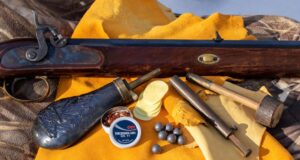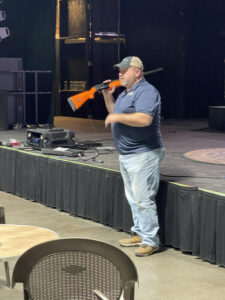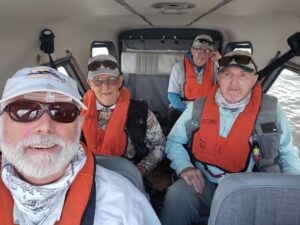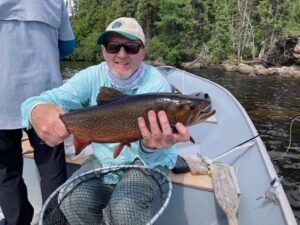The Healey-Driscoll Administration recently joined the Outdoor Recreation Roundtable (ORR), a national coalition of state governments, non-profits, and businesses to promote the growth of the outdoor recreation economy and outdoor-related activities. The Massachusetts Office of Outdoor Recreation (MOOR) joins 12 other state departments and organizations dedicated to fostering the economic development of more than 110,000 outdoor businesses and accessibility of outdoor recreation across the nation. As a member of the coalition, MOOR will convene regularly to identify challenges and solutions through innovative research and collaboratively sharing information on best practices within the field.
“Massachusetts is thrilled to join our industry, academic, and other state partners as a new member of ORR,” said MOOR Director Paul Jahnige. (It) was instrumental in the creation of MOOR and has already provided incredible models and tools for us to use, including advocacy and rural development tools and training.”
“It is an exciting day to bring Massachusetts into the fold as an ORR State Member,” said ORR Vice President of Programs Chris Perkins. “Director Paul Jahnige has wasted no time in developing forward-thinking initiatives to bolster the Bay State’s $11.8 billion outdoor recreation economy, and we are looking forward to supporting the Office’s future development and growth with research and industry partnerships.”
Established in December 2022, MOOR collaborates with agencies to promote activities across the state, including hunting, fishing, horseback riding, paddling, swimming, and more. Outdoor recreation is vital to the Massachusetts economy, contributing $11 billion to the economy, creating over 102,000 jobs, and boosting tourism. MOOR looks forward to collaborating closely with the Outdoor Recreation Roundtable to implement strategic initiatives that drive economic growth, ensure equitable outdoor access for all, and improve public health in Massachusetts. This announcement follows the hiring of Paul Jahnige as the state’s first Director of Outdoor Recreation
Trout Stockings
The following local waters were scheduled to be stocked last week by MassWildlife: West Branch of Westfield River in Becket, Chester, Middlefield and Huntington; East Branch of Westfield River in Savoy, Windsor, Cummington and Chesterfield; Mainstem of Westfield River in Huntington, Russell and Montgomery; Konkapot River in Monterey and New Marlborough, Laurel Lake, Richmond Pond, Pontoosuc Lake and Windsor Pond in Windsor.
How is climate change impacting our Berkshire lakes and ponds?
On Wednesday, April 3 from 2:30 to 4:30 pm, the Becket Conservation Commission and Becket Lakes & Ponds Association are sponsoring a free program that overviews how climate change is affecting our lakes and ponds, as well as other water resource areas, surrounding environment of trees and plants, and all wildlife that depend on them for their survival. The event will be held in the downstairs Community Room at the Becket Town Hall, 557 Main Street, Becket.
The panelists will be Bruce Winn – Berkshire Community College, Professor of Environmental Life Sciences, Emily Stockman – Stockman Associates, Owner and Senior Scientist and Joe Onorato – Water & Wetland owner Aquatic Specialist.
Refreshments will be provided.
Registration is required. Call Dave Johnson, Becket Conservation Chair: 978-424-5752
or email: CLIMATE PROGRAM or AIAINCDAJ@GMAIL.COM. A zoom link will be posted on the BCC web page.
Basic Hunter Education course
Basic hunter education is mandatory for all first-time adult hunters. MassWildlife offers Basic Hunter Education in two formats. Each format covers the same material and students take the same final exam.
Blended: Students complete the online MA hunter study guide before attending one in-person Field Day.
In-person (traditional): Students attend an entirely in-person, instructor led course that is offered over multiple days.
All courses are free of charge and open to the public.
An in-person course is being offered at the Worthington Rod & Gun, 458 Dingle Rd (Route 112), Worthington, MA. It will run for 4 nights: Monday, April 15, Tuesday April 16, Thursday April 18 and Friday, April 19. All classes run from 5:30 to 9:00 pm.
Two blended courses are also being offered nearby: One is at the Ashfield Rod & Gun Club, 161 North Street Plainfield, MA. It runs on Saturday, April 6 from 8:00 am to 4:00 pm. The other is at Westfield State University Horace Mann Center, 333 Western Avenue, Westfield, MA. It runs on Sunday April 17 also from 8:00 am to 4:00 pm.
To enroll, call 508-389-7830 or click onto: https://www.mass.gov/info-details/basic-hunter-education-course for all the details.
Game dinner coming up
The Annual Popsie Goerlach Dinner is scheduled for Wednesday, April 3 at the Stationery Factory in Dalton. Doors will open at 5:00 and dinner is at 6:00 pm. Last year they had almost 400 people attend and they’re hoping to do that again this year. They have a great menu lined up and some great prizes to give away, including a four-day Illinois Whitetail hunt, a Ravin crossbow, a Bowtech compound bow, and many other prizes. Tickets for the dinner and the raffle can be purchased online at https://www.12thman-goblue.com/2024-game-dinner
Gala event planned
On Saturday, April 6, the Lee Sportsmen’s Association/Ducks Unlimited (LSA/DU) 7th Annual Youth Sports Gala will take place at the Country Club in Pittsfield. There will be raffles and live and silent auctions. Doors open at 4:00 and dinner served is at 6:00 pm. Tickets cost $125 per person and can be purchased at leesportsmen.com or mail from Lee Sportsmen’s Association, PO Box 175, Lee, MA.
Coles Memorial Ice Fishing Derby results
According to information posted on the Coles Memorial Ice Fishing Derby web page, the derby raised over $1,200 this year for the Goose Pond Boat Ramp project. It is now complete and there will be a stone with a plaque going in this spring. After that, the original project will be complete, and the committee will be putting their energy towards figuring out what’s next. They thanked everyone who attended, donated and supported the event this year.
The ice fishing derby which started in 2020 is dedicated in Evan Scott Colbert’s memory who passed away in 2019 at the age of 29. He loved the outdoors and spent his leisure time fishing and boating. He could often be seen enjoying the waters of Goose Pond casting his reel while watching the eagles fly above.
Support endangered species at tax time
More than 430 plants and animals are listed under the Massachusetts Endangered Species Act. These rare species play an important role in keeping the Commonwealth’s natural communities thriving. You can make a difference by supporting endangered species conservation while filing your taxes this year. Simply look for Line 33A for Endangered Wildlife Conservation on your state tax form and write in any amount. Your meaningful donation will go to the Natural Heritage and Endangered Species Fund which is dedicated specifically to the conservation of rare species in the Commonwealth, such as the Shortnose Sturgeon (pictured).
In Massachusetts, Shortnose Sturgeon are currently found in the Connecticut and Merrimack Rivers with historical occurrences in many coastal rivers around Massachusetts.
Shortnose Sturgeon spawn in large freshwater rivers. They migrate from the mouths of rivers, traveling many miles to reach suitable spawning upstream. During non-spawning periods sturgeon often leave freshwater in pursuit of food resources in estuaries or along the coast and migrate between large river systems. The migration of its population in the Connecticut River is restricted by hydroelectric dams making this population one of the few that lives only in freshwater.
Shortnose sturgeon can live up to 60 years and do not reach reproductive maturity until they are 10–12 years old. That means their populations are likely slow to recover making them one of the most vulnerable freshwater fish species in Massachusetts
The major threats to this species are river habitat degradation and loss caused by dams, channel dredging, poor water quality, contaminants, fisheries bycatch, and incidental boating strikes.
Hydroelectric dams can alter water flow and sediment patterns impacting spawning success, fragment populations by limiting fish movement, and cause mortality if fish swim too near intake pipes and pass through turbines. Efforts to restore sturgeon migration and reconnect subpopulations are underway in the Connecticut River through the construction of fishways to aid upstream and downstream movement.
It is illegal to possess sturgeon. If you accidentally catch one while fishing, release it as gently and quickly as possible, even if you need to cut the line. Never take the fish out of the water.

